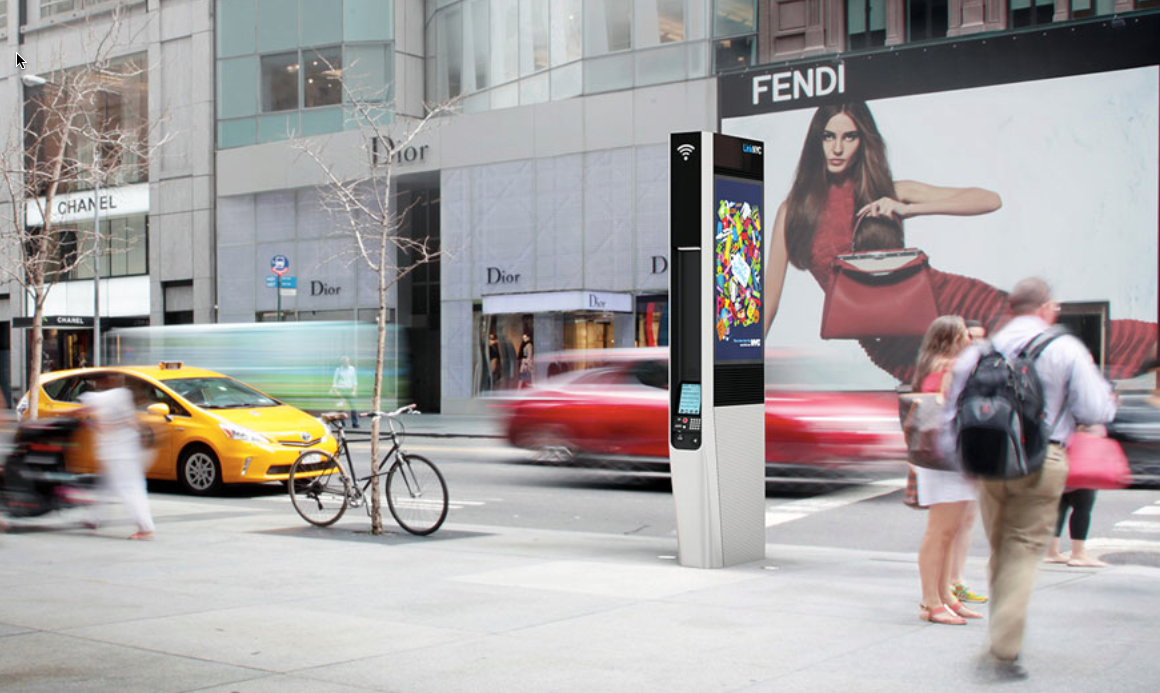Advertising in the City, City in Advertising
In his latest post, Marcin wrote about the ancestors of our MobiJet “s” and JetBikes and about how
outdoor advertising looked in the thirties of the previous century.
But what will advertising look like in the future, and in the not-so-distant future at that?
An interesting example is the LinkNYC project, which assumes the elimination of New York's anachronistic phone booths today. Instead, a network of 10,000 pylons is to be created, serving as free hotspots, enabling internet surfing at gigabyte speeds.
These pylons will be equipped with an advertising panel in the form of a digital screen, which will display both advertising content and information about city events and advertisements for municipal services.
The network will be managed by a consortium consisting of several technology companies. Advertising spaces will be managed by the current operator of advertising on phone booths – Titan company. Each pylon will additionally be equipped with a mobile phone charging station and a built-in tablet based on the Android system, thanks to which it will be possible to obtain all local information, connect to the emergency number 911, and also make free voice calls to any number within the United States.
The LinkNYC network is to be financed from advertising revenue and bring the city $500 million in income by 2027. The first pylons will appear on New York streets by the end of next year.
"By providing the world's fastest free internet access through the world's largest municipal WiFi network, available to both residents and visitors, we are taking a major step toward a more equal, open and accessible city" - said New York Mayor Bill de Blasio.
It is not yet known what WiFi technology the LinkNYC network will be based on.
It is supposed to achieve data transfer speeds one hundred times faster than the average speed in public WiFi networks and twenty times faster than home networks in New York.
A two-hour HD quality movie will be downloadable in 30 seconds.
So far there are no smartphones on the market adapted to such technology,
however, at the current pace of changes in this field, one can expect
that they will appear in the very near future.



